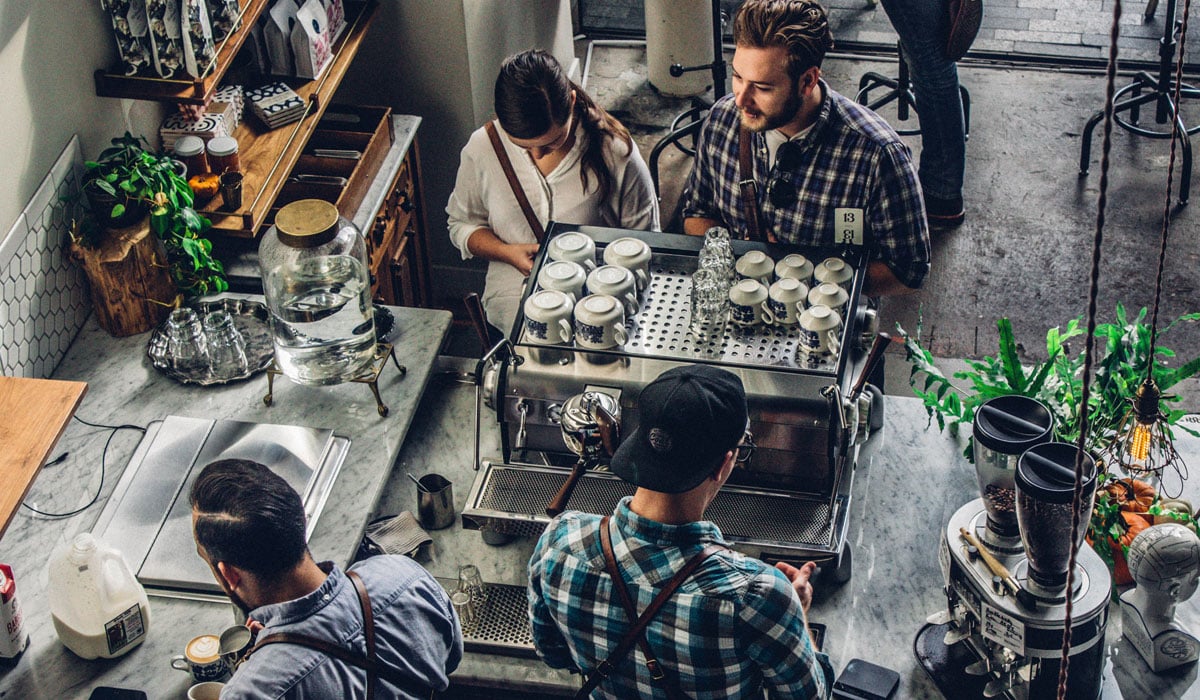Restaurants and fast-food outlets across the globe have been impacted dramatically by the ongoing pandemic, but with some restrictions being lifted in the U.S. in an attempt to kickstart economic recovery, many restaurateurs are doing their best to operate business as usual.
This doesn’t come without its challenges though, as guidance around social distancing and hygiene best practice continue to change on a daily basis. However, this article aims to provide restaurateurs with a number of staple measures they can put in place that will help their business model adapt to the current “new normal” and whatever else comes next.
Restaurant layouts
Whether you’re offering consumers fast food or a sit-down dining experience, one of the key areas you should address is your front of house layout to accommodate long-term social distancing.
Social distancing rules seem to be continually changing, but whether it’s 6 feet or less, it’s a measure that’s likely to stick around for some time. Adapting your restaurant layout to accommodate changing guidelines can be time consuming and disruptive to business productivity. Instead, it could be more time and cost-effective to look to introduce a more permanent restaurant layout model that promotes social distancing.
For sit-in restaurants, create a practical seating arrangement that ensures the right distance between diners. By reducing the seating capacity it will be easier for you to maintain long-term social distancing best practice. As guidelines change, you can reintroduce spare furniture as needed by keeping it safely in storage.
Similar principles can be applied to fast food restaurants. Introducing temporary plastic protective screens to counters that can be easily removed will cause minimal disruption to daily operations. You can also use visual prompts like warning tape on the floors to mark out the correct distance between customers. The beauty of using tape rather than something like paint is it can be easily removed if and when guidelines change further down the line.
Cleaning schedules
The food sector has always had to adhere to strict health and safety for obvious reasons, but in the midst of the pandemic, there’s continued emphasis on hygiene both in and out of the kitchen.
Maintaining these high standards has meant many restaurants have had to adapt their cleaning schedules to include daily deep cleans, as well as frequent spot cleans of high-touch surfaces and busy areas. While in the early stages this seemed like a temporary process, this is one area that will continue to be a top priority in the current ‘new norm’.
While intense cleaning routines may be time-consuming, it could be more cost-effective to view it as a long-term investment. Take the time to reassess your current cleaning processes to identify any areas that you could improve or save money.
For instance, could it be more cost effective to get a professional cleaner in for the daily deep clean rather than staff, as they may be quicker? Or could you save money by bulk-buying cleaning supplies?
Investing in your cleaning protocol now could be the key to future-proofing your restaurant and ensuring it’s equipped to respond to any potential changes that COVID-19 may bring further down the line. It also has long-term benefits to both staff and customers, as demonstrating that you operate a clean and sanitary establishment is always good for business.
Personal hygiene
Personal hygiene has been a key focus point across many industries since the outbreak began and it’s not going anywhere anytime soon. As a business owner looking to respond to the ever-changing impacts of COVID-19, prioritizing good personal hygiene habits with staff is key.
Start by investing in hand sanitizer stations and stocking up on sanitizer solutions, ensuring they’re easily accessible throughout your kitchen, dining area and restrooms. With the spotlight on hygiene, taking more permanent measures to provide suitable hand sanitizing facilities now will ensure that if this becomes a permanent necessity, you’re already well-prepared.
Beyond hand washing, in customer-facing businesses like the food industry, it’s important to recognize how you can protect staff and diners in other ways. Having protective face masks and protective gloves in stock will ensure your kitchen and front of house staff have the appropriate PPE to maintain outstanding levels of personal hygiene at all times regardless of what any changes in guidelines bring.
Despite moves to reopen restaurants to aid economic recovery, the restaurant landscape is continuing to change and adapt to new guidelines and protocols amidst the pandemic. However, by getting the right precautions in place now, handling any future changes that may come your way should be that little bit easier, helping to secure the future of your business during these unprecedented times.
Alex Jones is a content creator for No1 Packaging, one of the UK’s lowest cost packaging providers.













